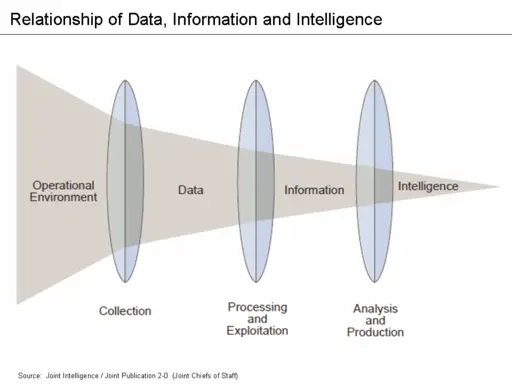The psychology of intelligence analysis is the study of how human cognitive biases and heuristics
Intelligence analysts are tasked with making sense of complex and often ambiguous information to assess threats and inform decision-makers.
However, research in cognitive psychology has shown that people are prone to a number of cognitive biases that can lead to faulty judgments.
Some of the most common cognitive biases that can affect intelligence analysis include:
Confirmation bias: The tendency to seek out and interpret information in a way that confirms our existing beliefs.
Availability bias: The tendency to overweight information that is readily available to us, even if it is not representative of the overall situation.
Representativeness bias: The tendency to judge the probability of an event based on how similar it is to other events that we have seen in the past.
Anchoring bias: The tendency to be influenced by the first piece of information that we receive, even if it is irrelevant to the decision at hand.
Groupthink: The tendency for groups to make decisions that are more extreme than any individual member of the group would make on their own.
These cognitive biases can lead intelligence analysts to make a number of errors, such as:
Overestimating the likelihood of events that are consistent with their existing beliefs.
Underestimating the likelihood of events that are dissimilar to events that they have seen in the past.
Misinterpreting ambiguous information in a way that confirms their existing beliefs.
Giving too much weight to the first piece of information that they receive.
Making decisions that are more extreme than the evidence warrants.
Intelligence analysts can mitigate the effects of cognitive biases by being aware of them and by using structured analytic techniques.
Structured analytic techniques are methods for analyzing intelligence information in a systematic and rigorous way.
Some common structured analytic techniques include:
Analysis of competing hypotheses: This technique involves developing and evaluating multiple hypotheses about a situation before reaching a conclusion.
Devil’s advocate: This technique involves having someone challenge the analyst’s assumptions and conclusions.
Red teaming: This technique involves simulating an adversary’s perspective in order to identify potential vulnerabilities.
By being aware of cognitive biases and using structured analytic techniques, intelligence analysts can improve the quality of their judgments and decision-making.
The psychology of intelligence analysis is a complex and evolving field.
As our understanding of human cognition improves, so too will our ability to develop methods for mitigating the effects of cognitive biases in intelligence analysis.
Richards “Dick” J. Heuer, Jr. (1927-2018) was a CIA veteran of 45 years and is most known for his work on the analysis of competing hypotheses and his book, Psychology of Intelligence Analysis.
Heuer’s interest in intelligence analysis and “how we know” was rekindled by the case of Yuri Nosenko and his studies in social science methodology while a master’s student at the University of Southern California.
Nosenko was a Soviet KGB defector who was initially judged to be part of a “master plot” for penetration of the CIA, but was later officially accepted as a legitimate defector.
Heuer’s analysis of the Nosenko case led him to develop a number of insights into the cognitive biases and heuristics that can affect intelligence analysis.
In his book, Psychology of Intelligence Analysis, Heuer identifies and describes a number of cognitive biases that can affect intelligence analysts, including confirmation bias, availability bias, representativeness bias, anchoring bias, and groupthink.
He also discusses structured analytic techniques, such as analysis of competing hypotheses, that can be used to mitigate the effects of these biases.
Heuer’s work has been widely influential in the field of intelligence analysis.
His book is considered to be a classic text in the field, and his insights have been used by intelligence analysts around the world.
In addition to his work on cognitive biases and structured analytic techniques, Heuer also made significant contributions to the field of counterintelligence.
He developed a number of techniques for detecting and preventing deception, and his work has been used to train intelligence analysts and law enforcement officers.
Heuer’s work has had a major impact on the field of intelligence analysis.
His insights into cognitive biases and structured analytic techniques have helped intelligence analysts to improve the quality of their judgments and decision-making.
Heuer’s work is still relevant today, and his insights continue to be used by intelligence analysts around the world.
Image credit
U.S. Joint Chiefs of Staff JP2-0, Public domain, via Wikimedia Commons
